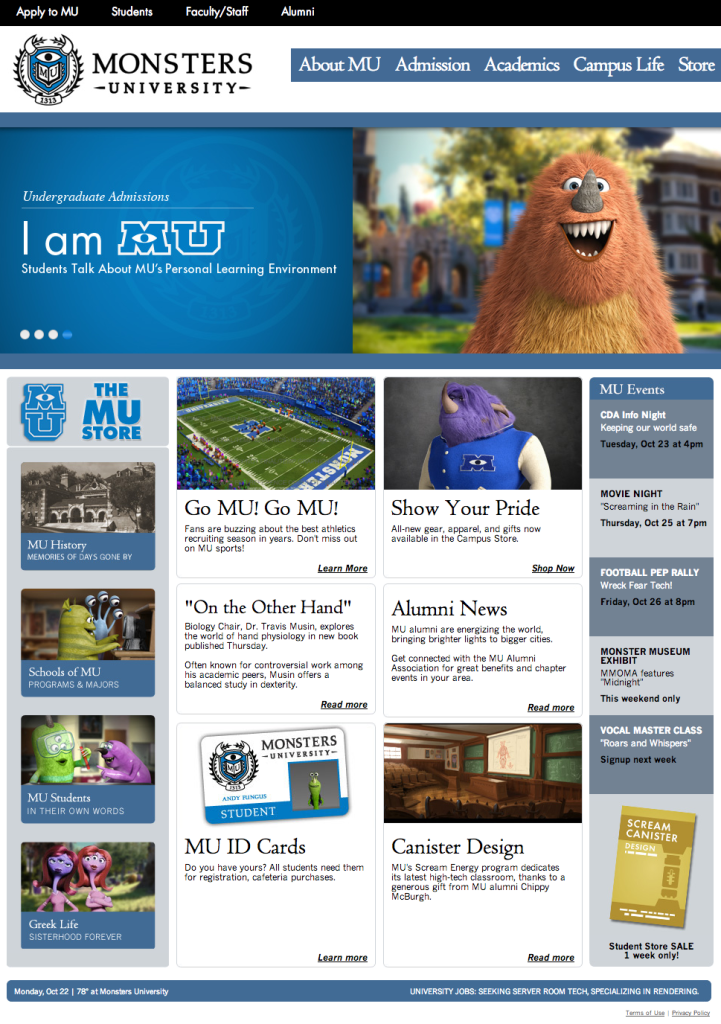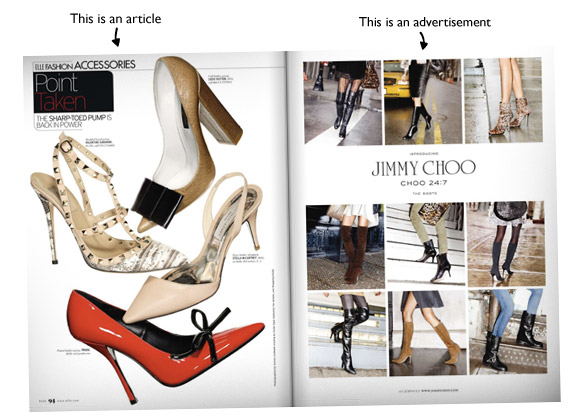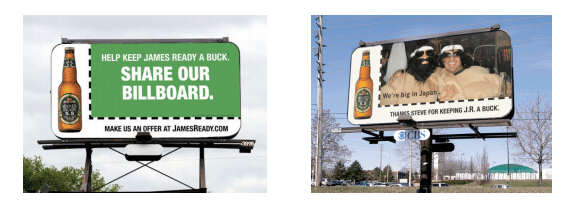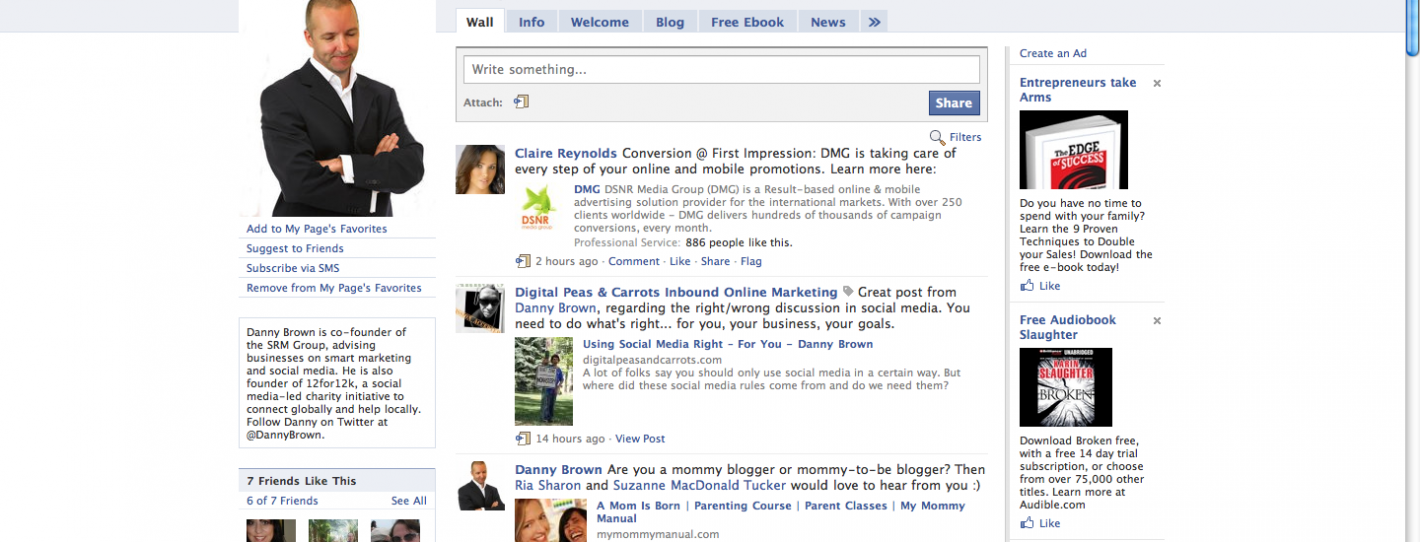As marketers, we focus a lot on data to help us create strategies and tactics that will appeal to our core demographic.
We collate reams of information from various channels – social, mobile, print, media, research studies – and filter out the non-useful to drill down into the qualitative information needed to offer our campaigns a better chance of success.
The problem is, we’re allowing the data to drive our decisions, instead of our decisions being driven by the insights we, as humans, gather from the automated machine learning solutions.
This leads us to market with a one size fits all mentality, when – as any good marketer will tell you – we should be doing anything but.
The Perils of Driving Decisions Using Simple Data
Part of the problem comes from the instant result mindset we’ve forced upon brands in the age of social media.?Pre-social media, word-of-mouth campaigns and more traditional marketing and advertising was built with longer-term thinking when it came to results.
Now, if your Facebook campaign doesn’t garner you 1,000 new fans, or your blogger outreach campaign doesn’t drive sales, it’s clear that social media and selling/marketing/advertising don’t go together.
Except they do, and this is continuously being shown by the brands that do it right.
The reason the complaining brands aren’t seeing return is because the brand manager or CMO has read a survey or two from leading publications, and used them as the basis for the demographic knowledge for his or her upcoming campaign.
For example, let’s say your brand is targeting millennials. Now, depending on who you talk to, the age range for this consumer group can vary – but they’re primarily folks that were born between the early 80’s and the early 2000’s.
If you were to read a recent study of over 500 millennials from technology vendor SocialChorus, whose product is aimed at brands looking to connect with advocates, you’d get the following takeaways:
- They are educated and big digital users, particularly Facebook, but they distrust advertising;
- 67% have never clicked a Sponsored Story;
- 95% say friends are the most credible sources for product information;
- 98% are more likely to interact with a friend’s social update than they are with a brand.
Going by this information, which was featured by respected publication Huffington Post, as a brand manager you’d be thinking:
Okay, so we’ll use Facebook to target our ads, because we still have 33% of the audience to go after, and we’ll look to offer their friends freebies to share since our own brand updates won’t be engaged with.
And that’d be all well and good – until you read this survey, from marketing data specialists Valassis.
In their findings, which surveyed more than 5,100 respondents (10x more than the SocialChorus one), a different view of millennials arises:
- 51% prefer newspapers for coupons and deals, compared to only 23% using the digital channels of blogs and savings sites;
- Email coupon alerts accounted for 50%, as opposed to the Facebook-heavy usage that the previous report highlighted;
- Mobile is a huge driver for millennials, with 45% saying they’d accessed a coupon in an email via mobile, and 32% downloading a coupon via smartphone.
So, going by this data, you’d swing your approach from Facebook marketing to a more traditional approach using print, complemented with a mobile-focused campaign that incorporates email sign-ups.
Except you’d still be missing a core part of the story.
Why Data is Only Telling Half the Story
The two surveys highlighted here so far from SocialChorus and Valassis show the purchasing preferences of millennials – depending which one you take notice of, it’s either by recommendations from friends, or by coupon ads in newspapers, or email/mobile offers.
However, neither of these surveys have countered in a third option – that of situational decision-making.
It’s all well and good having data that shows you the atypical behaviour of a demographic, based on surveys and publications from that specific market. Yet these behaviours are only as good as the situational knowledge we have about that audience.
In his article over at AdWeek entitled The Millennial Male is Not Who You Think He Is, Sam Thielman shares something that many surveys don’t take into account – the situational factors that impact today’s millennial male (essentially half the target audience for brands in this market).
From Thielman’s article:
- As a collective, they have $1 trillion in student debt;
- Just 62% are employed, of which half of these are part-time jobs;
- Over one third live at home with their parents;
- They’ve lost a third of their median net worth in the last 8 years.
Simply put, millennials don’t necessarily have the disposable income to spend on the marketing approaches the surveys from SocialChorus and Valassis would suggest brands implement.
Instead, as Thielman continues, brands need to look to alternative methods of advertising – digital viewing channels like Netflix, Hulu and Apple TV, for example. However, given that many consumers use Netflix to avoid advertising, brands will have to think smarter than simple ads.
Perhaps the biggest spanner in the works is the belief that millennials prefer friend recommendations over brand marketing. Not according to a survey by Bazaarvoice from 2012.
According to that survey, conducted with over 1,000 correspondents:
- 51% trust user generated content (UGC) from strangers, over that of their friends, when it comes to making a purchase;
- 84% of millennials said that UGC influenced their decisions, with only 3% saying it didn’t impact them at all;
- 71% feel brands care about the opinions of their consumers.
Based on that data, a blogger outreach campaign would be much more effective to run a marketing campaign. Now you can see where the confusion could come in.
Three surveys, three different recommendations, three different data points – yet all about the same target audience. And that’s before you even get to the viability of whether or not your target audience is going to be able to afford your product or not.
Simple Data Out, Insights In
It’s not all doom and gloom. The surveys I highlighted here all have valuable information, and can be used to really hone in on what the best approach would be for your target audience, if your brand sits in the millennial consumer market.
Where the problem arises is when it’s the only data that a brand marketer, CMO, or similar uses to put together the strategy for any upcoming campaign.
It’s just one part of a far bigger picture, yet it’s the ignoring of this bigger picture for quick hit data that is messing everything up. Instead of the simple data, we need to be collating everything into a more insights-led overview.
- Is there any data that crosses over between reports?
- Does the data vendor understand my market?
- How does the data correlate to the specific audience I’m after (geography, financial, brand affinity, local laws);
- Does the data make sense from an archival behaviour aspect?
- Does the data allow for long-term building approaches or short-term fire sale targeting?
As you start to build out your knowledge graph from these questions, you can add them to your previous knowledge points based on previous campaigns, results, and increased understanding of your audience (in this case, millennials).
This collates all the data, new and old, and offers actual insights for your campaign versus trusting the latest survey that may or may not be relevant to your brand’s goals.
It’s a longer process; but it’s one that actually builds around known specifics versus unknown intangibles.
Which one do you think offers the greater return potential?














